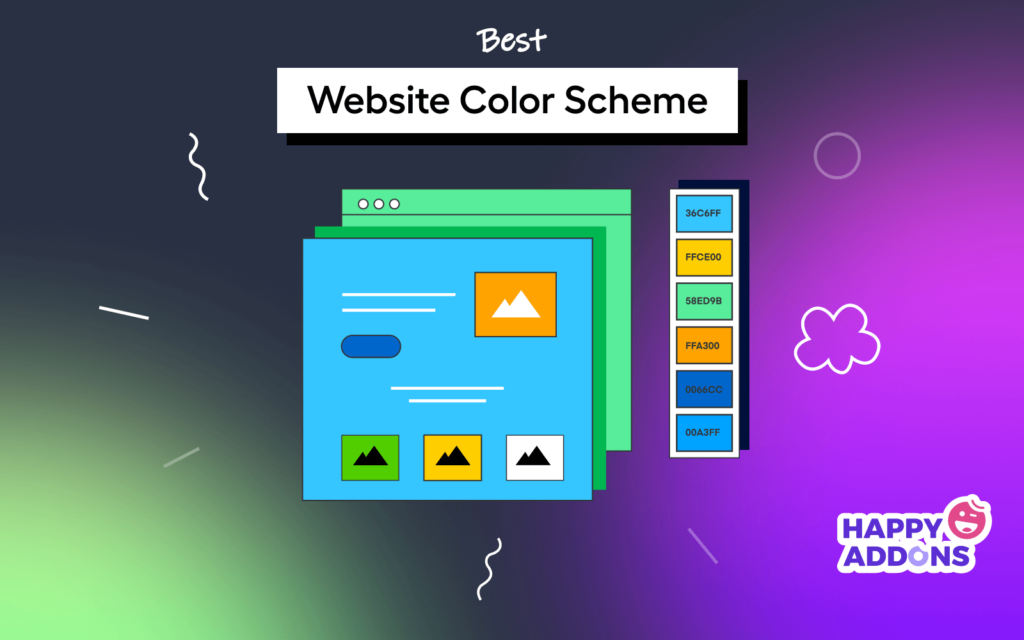Blitz News Digest
Stay updated with the latest trends and insights.
Color Your World: The Secrets Behind Irresistible Website Palettes
Unlock the secrets to striking website color palettes that captivate and convert. Transform your site with eye-catching hues today!
How to Choose the Perfect Color Palette for Your Website
Choosing the perfect color palette for your website is essential for creating an engaging and visually appealing online presence. Start by considering your brand identity and the emotions you want to evoke in your audience. Colors can influence perceptions and behaviors, so it's vital to select hues that align with your brand's message. For example, blue often conveys trust and professionalism, while yellow can evoke feelings of warmth and optimism. To narrow down your options, create a mood board that showcases colors and styles that resonate with your brand.
Once you have a clearer idea of your preferred colors, it’s time to establish a harmonious color palette that complements your website's design. Aim for a combination of primary, secondary, and accent colors. A common approach is to select one dominant color, two to three complementary colors, and a couple of neutral tones to balance the overall look. Be sure to test your palette in various design elements, such as backgrounds, text, and buttons, to ensure readability and visual comfort. Remember, consistency is key; using the same color scheme throughout your site will enhance user experience and strengthen brand recognition.

The Psychology of Color: How Colors Influence User Behavior
The psychology of color plays a crucial role in influencing user behavior across various platforms, from websites to product packaging. Colors evoke emotional responses and can significantly affect decision-making processes. For instance, studies have shown that warm colors like red and orange can create a sense of urgency, often seen in clearance sales, whereas cool colors like blue and green are associated with trust and tranquility, making them ideal for financial institutions. By understanding these associations, brands can strategically select their color palettes to align with their desired messaging and user experience.
Moreover, different cultures interpret colors in various ways, adding another layer to the psychology of color. For example, while white symbolizes purity and peace in Western cultures, it can represent mourning in some Eastern cultures. This understanding is vital for global brands looking to create a cohesive image that resonates with diverse audiences. In addition, A/B testing different color schemes can provide valuable insights into how changes in color can lead to improved user engagement and conversion rates. Ultimately, leveraging the right colors can transform an ordinary website into a compelling user experience.
10 Trending Color Combinations for Modern Websites
When it comes to designing modern websites, the right color combinations can significantly enhance user experience and engagement. Here are 10 trending color combinations that are capturing attention this year:
- Bold Black and Electric Blue - This striking pairing creates a dramatic yet refreshing look.
- Soft Pastels and White - Perfect for creating a calm and serene atmosphere.
- Vibrant Coral and Teal - A trendy combination that brings energy to any page.
- Earthy Greens and Neutral Grays - Great for sustainability-focused brands.
- Sunset Orange and Deep Purple - Adds warmth while maintaining sophistication.
- Classic Blue and Gold - Timeless elegance for premium sites.
- Muted Mauve and Cream - Ideal for a minimalist aesthetic.
- Monochromatic Shades - Using varying shades of a single color can create depth.
- Bright Yellow and Charcoal - A playful yet professional combination.
- Red and White - Great for creating a bold impact.
Utilizing these trending color combinations can dramatically influence the mood of your website and how visitors perceive your brand. Keep in mind, the selection of colors should not only align with current trends but also reflect your brand identity. For effective design, ensure there is sufficient contrast for readability and that the visual hierarchy is maintained. A strategic approach to color combinations can elevate the overall aesthetic, making your site not just attractive, but also inviting and user-friendly.